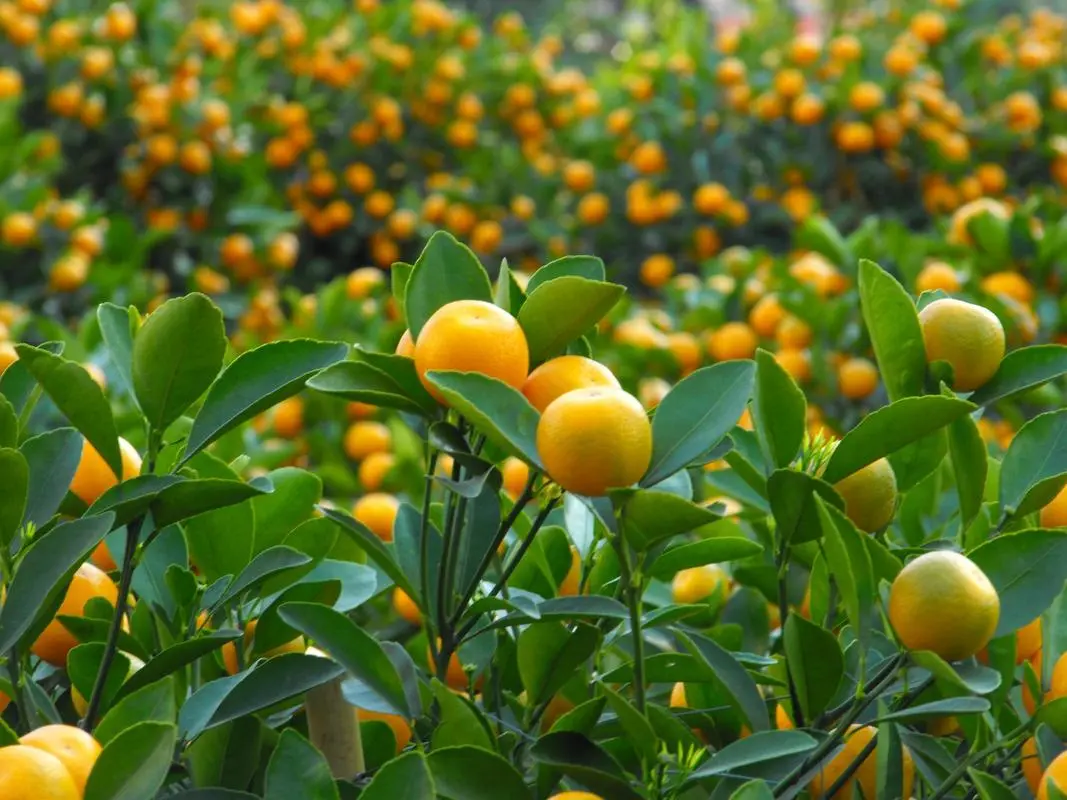
Kumquat, also known as Citrus japonica Thunb., is an evergreen shrub of the Rutaceae family. The tree is less than 3 meters tall, with thick leaves, ovate-lanceolate or oblong, with a slightly pointed or blunt apex, a wide wedge-shaped or nearly round base; the petiole is 1.2 cm long, and the wing leaves are very narrow. Single flower or cluster of 2-3 flowers; pedicel 3-5 mm long; ovary oval, style slender, usually 1.5 times the length of ovary, stigma slightly enlarged. The fruit is oval or egg-elliptical, orange to orange-red, with sweet peel; the seeds are oval, the cotyledons and embryos are green, with single or occasionally multiple embryos. The flowering period is from March to May, and the fruiting period is from October to December.
In China, potted fruits are common in the jasmine flower market on the eve of the Spring Festival. Folks use them to decorate the New Year atmosphere. Vietnam has the same custom. The clever ones cultivate it until each plant bears more than 300 fruits.
There are also varieties with sour peel, so the flavor is inferior to kumquats, but the content of vitamin C is higher. Fruit salt or candied fruit is made into cool fruit with licorice as seasoning.
